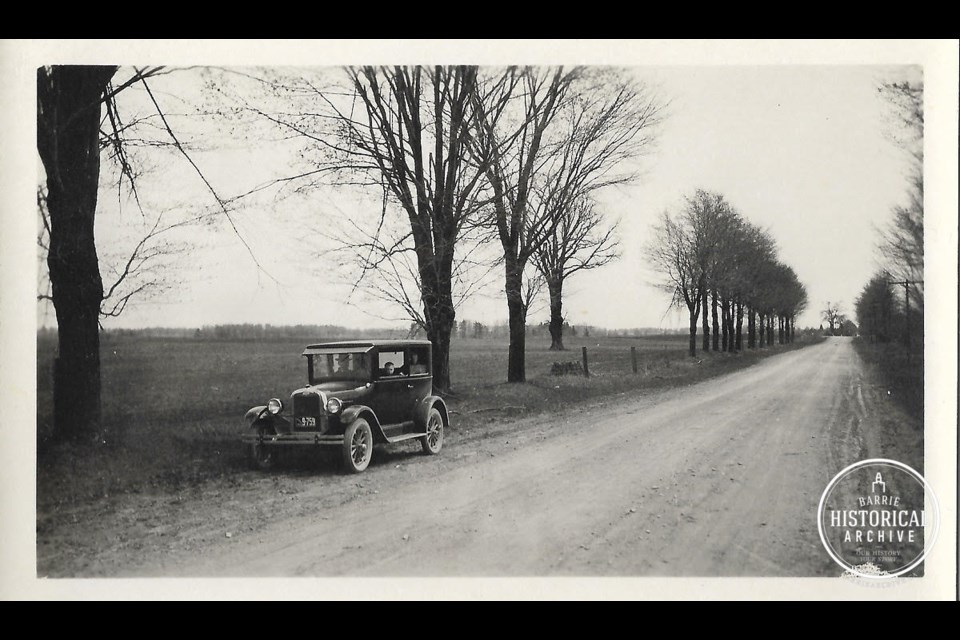The farm property encompassed some 300 acres, with only about a third of it was under cultivation. The rest was our playground – frog-filled canals, dense bush, and marshy areas beloved only by the clouds of mosquitoes the likes of which you have never seen.
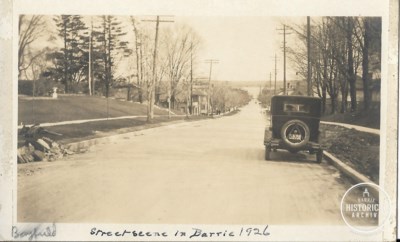 Looking south on Bayfield St. from Wellington St. 1926. Photo courtesy of Barrie Historical Archive.
Looking south on Bayfield St. from Wellington St. 1926. Photo courtesy of Barrie Historical Archive.Summer days were spent hiking and exploring, and seeking some kind of adventure modelled after one of our favourite TV shows, ‘The Forest Rangers’. It was an extremely quiet place when I lived there, over forty years ago, and I believe it remains so today.
Since the late 1950s, this lonely outpost on the edge of Cook’s Bay has been good for vegetable farming and muskrat hunting, but just a few decades earlier it was the site of another industry that thrived best in a neglected spot. As children on our woodland walks, we often found the remnants of the operation.
This was moonshine country.
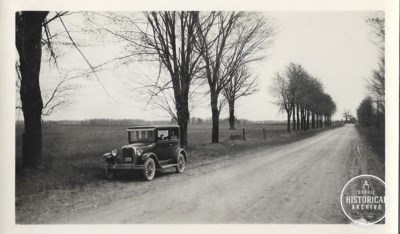 Highway 11 near Stroud 1926. Photo courtesy of Barrie Historical Archive.
Highway 11 near Stroud 1926. Photo courtesy of Barrie Historical Archive.Henry ‘Sank’ Lowe had a cabin near the railway tracks on the 13th Line of West Gwillimbury Township, and he farmed a little there. Like any smart businessman in his particular trade, his product was manufactured a good distance from his dwelling, deep in the bush and next to a clear running stream. We found Sank’s old still, or what was left of it, when we stopped to drink from the spring water, and wondered at the collection of rotted piping and barrel hoops that looked so out of place among the forest greenery.
Sank Lowe was certainly not the only maker of illicit liquor in Simcoe County in the early 20th century. The archives of the ‘Barrie Examiner’ and ‘Northern Advance’ contain numerous articles about the moonshiners from Gilford, Matchedash and Cookstown being raided, taken to Barrie for trial and then fined or jailed.
“Makers of moonshine will be more careful in the future when they offer their liquor in Barrie. At least Martin Shaughnessy, Midhurst, and Wesley Dales, of Craighurst, will make sure who they are addressing should they ever peddle their illicit liquor in this town again.” In a ‘Northern Advance’ article dated May 5, 1935, the story of two bumbling moonshiners is told. The pair both ended up getting three months in the Barrie Jail, after mistaking off-duty police officer, William Thompson, for a customer one night.
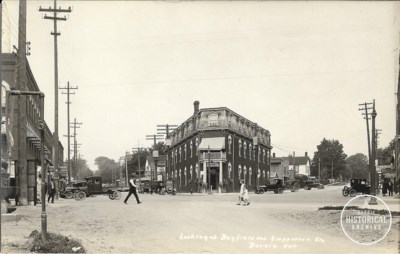 The Simcoe Hotel at Five Points 1927. Photo courtesy of Barrie Historical Archive.
The Simcoe Hotel at Five Points 1927. Photo courtesy of Barrie Historical Archive.“He stated that he was returning home after driving downtown in civilian clothes and was accosted at the Five Points. ‘Shaughnessy asked me if I was the man from Cundles. When I smelled liquor on his breath I suspected something was wrong so I said I was and drove them north of town. They told me to stop the car near a sideroad. While Dales went into the bush, Shaughnessy asked me if I had brought any money. He said it would cost $10 a gallon.’”
The service provided by the bootlegger filled a void left when the Ontario Temperance Act of 1916 banned most production, and all possession, as well as consumption in a public place, which effectively halted all alcohol sales in hotels. After much rumbling from various anti-drinking groups, and several failed government plebiscites, the feeling of wartime patriotism ultimately led to Prohibition being enacted nationally.
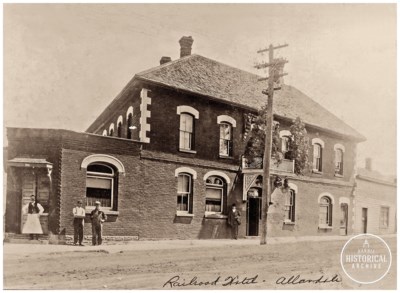 The Railroad Hotel, later the Clifton Hotel, Allandale, unknown date. Photo courtesy of Barrie Historical Archive.
The Railroad Hotel, later the Clifton Hotel, Allandale, unknown date. Photo courtesy of Barrie Historical Archive.For a number of years, hotels struggled to survive on the renting of rooms and service of food alone, or so they said. In reality, many local establishments continued to quietly serve alcohol to a select few and in many cases, it was house made. I have seen the small room in the cellar of the Simcoe Hotel where illicit liquor was reportedly made. By 1923, hoteliers had a little relief and could legally sell very light beer if they had the appropriate permit.
Meanwhile, the moonshiner was busy distilling his product and filling crocks, while the police and other agents scoured the woods in search of his still. The taste for hard liquor didn’t disappear during the Prohibition era, but the customer had to know who to ask about obtaining something to drink, and had to be very careful not to get caught in possession of illegal booze. He also had to be wary of bad product.
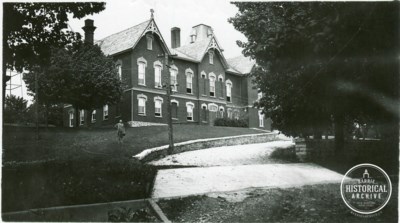 The old county courthouse on Worsley St. circa 1925. Photo courtesy of Barrie Historical Archive.
The old county courthouse on Worsley St. circa 1925. Photo courtesy of Barrie Historical Archive.“He admitted being drunk, saying that a young man from Allandale by the name of Simmons had asked him if he wanted a drink, and taking him into the washroom of the Wellington Hotel, the two of them took a drink of swamp whisky from a bottle proffered by another man, whom Cole said he had never seen before.” The ‘Northern Advance’ article of February 9, 1922 goes on to say “One drink was enough to lay him out, for when arrested by police he was in an unconscious state in Fred Ayerst’s garage. He spent the remainder of the night in the lockup.”
In 1927, Prohibition ended and was replaced with the Liquor Control Act whereby people in Ontario, of legal age, could buy government-controlled alcohol for personal use. I was not until 1934 that public drinking in hotels and taverns became legal again.
Each week, the Barrie Historical Archive provides BarrieToday readers with a glimpse of the city’s past. This unique column features photos and stories from years gone by and is sure to appeal to the historian in each of us.
